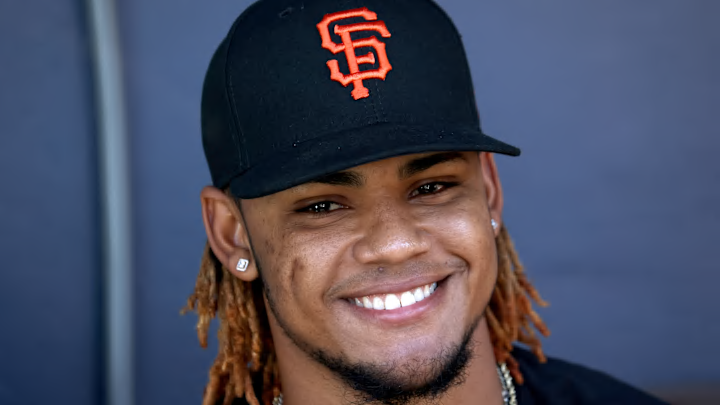
Depth Chart Strength
Outfield – Outfielders are a strength of the system not only because the group has top-end talent but also because of its impressive depth. Leading the pack are 55 FV Luis Matos and the only 50 FV prospects in the rankings Heliot Ramos and Jairo Pomares.
It does not contain any 45 FV prospects, but there are six 40 FV prospects and a couple of potential prospects that might shoot up to the 45 FV tier after a stellar 2022 season. Those potential breakout prospects in the 40 FV tier are Hunter Bishop, Grant McCray, and Alexander Suarez. There are also prospects below the 40 FV tier that could elevate themselves to another level if they exceed expectations in the upcoming season. These prospects include Victor Bericoto, Najee Gaskins, and Mauricio Pierre.
Also, the key thing that makes the outfield a strong demographic in the organization is the youth at the top of the group. Luis Matos will most likely join Jairo Pomares in Eugene, and they are still at least two years away from reaching San Francisco if everything goes as planned. Even if Heliot Ramos graduates from prospecthood this season, there is enough talent at the lower tiers to ease the impact of his eventual graduation.
Starting Pitching – After looking at the depth chart, it came as a surprise to see that starting pitching is a strength of the organization. It has not only a prospect in the 55 FV tier that is at least two years away from the big leagues in Kyle Harrison but it also has plenty of depth, even better than the outfield corps with four 45 FV and 11 40 FV starting pitching prospects. What you are reading is not a lie. There are 11 40 FV tier starting pitching prospects in the organization. Yes, that number will reduce to 10 once Sammy Long graduates in the not-too-distant future and possibly nine if Sean Hjelle graduates in 2022, but nine starting pitching prospects are still a lot.
The impressive depth shall be attributed to the investments that the Giants’ amateur and international scouting have made over the past three years in addressing the issue and the development of these said prospects. The most exciting thing to think of is that out of the nine prospects, only Ryan Murphy has the chance to graduate after the 2023 season.
There will always be a possibility that there are starting pitching prospects right now that will most likely move to the bullpen throughout their minor league careers (Swiney, Ragsdale, and Berroa are the more likely converters). However, there is more than enough youthful talent outside the 40 FV tier that will replenish the talent lost. Overall, the starting pitching depth is in a great place entering the 2022 season and it could be even better if the prospects outside the 40 FV tier will break out and move up to another level after the season (Black and Manzano are the likeliest candidates).
Relief Pitching – Like with starting pitching, relief pitching is also in an excellent place. Even though Camilo Doval, the organization's top reliever prospect, and Kervin Castro should graduate during the 2022 season, which will hurt the depth of the relief corps, it is the depth that makes the relief corps a true strength.
There are 11 relief prospects with 40 FV grades and if we take out Castro, Randy Rodriguez who will probably slide to the rotation, and potentially Gregory Santos if ever he comes back strong in 2022, there are still eight prospects who have the potential to make it to the big leagues given the perfect circumstances.
What is also impressive about the relief pitching group is that several relievers outside the 40 FV tier can replenish any eventual graduations and enter the tier after the 2022 season. Relievers like Enmanuel de Jesus, Clay Helvey, Mauricio Llovera, Austin Reich, Blake Rivera (he is a starter now, but he is more of a reliever), and Frank Rubio are currently outside the top 40 FV tier but have the potential to become big-league contributors.
There is also the 2021 pitching draft class that should be considered as well. Most of them pitched in relief last season but a couple or more slide to the rotation and potentially stick there like Mat Olsen and Rohan Handa. However, there are true relievers in the draft class that could enter the 40 FV tier after a strong 2022 season like Evan Gates, Joe Kemlage, and Landen Roupp.
